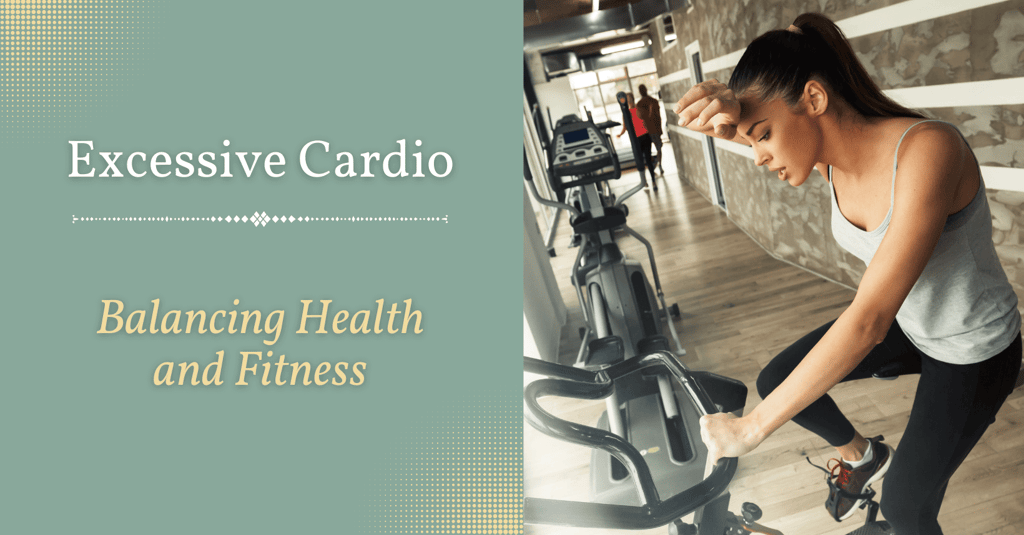The Pitfalls of Excessive Cardio: Balancing Health and Fitness
8/18/20232 min citit


You’ve likely heard about the numerous benefits of cardiovascular exercise, or cardio, such as improved heart health, weight management, and stress reduction. Engaging in regular cardio workouts undeniably offers advantages for both your body and mind. However, just like with any aspect of life, moderation is key. It’s important to note that excessive cardio, despite its positive aspects, can lead to a range of negative consequences that you should be aware of.
The Hazards of Overdoing Cardio
1. Loss of Muscle Mass:
Pushing yourself too hard with excessive cardio can result in the loss of muscle mass. Your body may start breaking down muscle tissue for energy during extended endurance activities, which can be concerning if you’re aiming to build or maintain muscle.
2. Higher Risk of Injury:
Overworking your body through too much cardio can increase your risk of injuries. The repetitive strain on your joints and muscles without sufficient recovery time can lead to problems like stress fractures, tendonitis, and ligament injuries.
3. Weight Loss Plateau:
While cardio contributes to weight loss by burning calories, going overboard can cause your body to hit a plateau. This means your body adapts to the routine and burns fewer calories, which can be frustrating if you’re relying solely on cardio for weight management.
4. Elevated Stress Hormones:
Intense and prolonged cardio sessions can elevate stress hormones like cortisol. When these hormones are chronically elevated, it can lead to negative health outcomes such as impaired immune function, disrupted sleep patterns, and weight gain.
5. Impact on Heart Health:
Moderate cardio benefits heart health, but too much cardio can stress your heart. Intense workouts over extended periods can increase the risk of irregular heartbeats, arrhythmias, and other cardiovascular issues.
6. Compromised Recovery:
Recovery is crucial for muscle growth, performance improvement, and overall well-being. Too much cardio without enough recovery time can hinder your body’s ability to repair and rebuild, potentially leading to burnout.
Strategies for Striking the Right Balance
Incorporate Strength Training:
Mix your cardio with strength training to help maintain muscle mass, boost metabolism, and enhance overall physical performance.
Prioritize Rest and Recovery:
Give your body adequate time to recover after intense cardio sessions. This includes getting sufficient sleep, practicing relaxation techniques, and incorporating activities like stretching or yoga for active recovery.
Diversify Your Workouts:
Instead of sticking to high-intensity cardio alone, introduce a variety of exercises into your routine, such as interval training, steady-state cardio, and low-impact activities like swimming or cycling.
Listen to Your Body:
Pay attention to how your body responds to your workout routine. If you experience constant fatigue, decreased performance, or mood changes, these could be signs of overdoing it.
Set Realistic Goals:
Understand your fitness objectives and design a workout plan that aligns with them. Consulting with fitness professionals can help you create a balanced program tailored to your needs.
Conclusion
Cardiovascular exercise remains a cornerstone of a healthy lifestyle, but it’s important to be mindful of the drawbacks of excessive cardio. Striking the right balance between cardio, strength training, and recovery is key to achieving optimal health and fitness outcomes. By tuning into your body’s signals, diversifying your workouts, and making informed decisions, you can ensure that cardio continues to be a valuable tool on your journey towards overall well-being.
If you have any questions or need some assistance, feel free to submit a comment or send us a message here.
